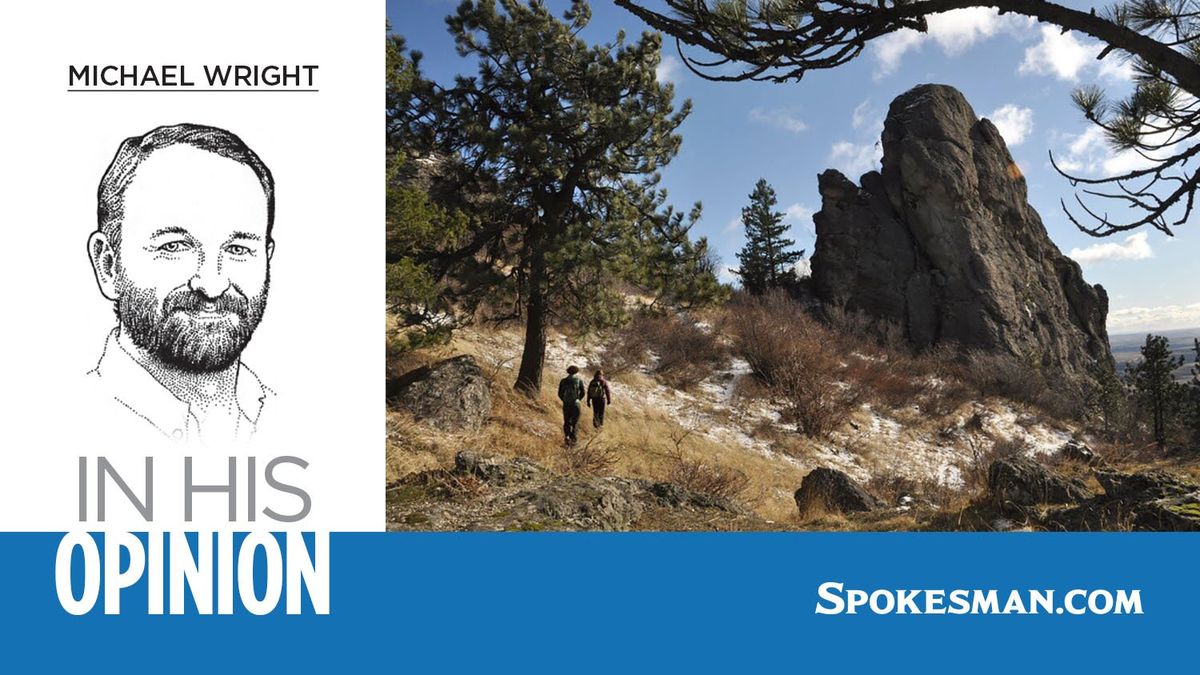Michael Wright: A delicate time for trails

Spring is a delicate time for trails.
Cold nights and warm days can cause trail conditions to yo-yo each day, particularly when nighttime lows go below freezing. A trail can transform from hard and frozen in the morning to soft and muddy in the afternoon, ripe for new ruts or accidental widening.
It’s one of the loveliest times of year to go outside, those first warm days that remind us numbers go higher than 60. But it’s also a time for people to be mindful of the lasting damage they can cause on hiking and biking trails around the region.
“Even hikers can end up sinking in an inch deep, and that causes damage,” said Holly Weiler, Eastern Washington regional coordinator for the Washington Trails Association.
So what is a trail lover to do?
Weiler often goes out early in the morning this time of year, hoping to hit the trails when they’re still frozen and are tougher to harm. When nighttime temperatures are above freezing, however, that may be a moot point.
Where a trail is and what it’s made of are important considerations. Some areas get more sun than others and can reach prime condition sooner, and some soils absorb water better than others.
In the next week or so, south-facing slopes and nonclay soils are a good bet. Places like Antoine Peak and Iller Creek can be problem areas, Weiler said, because the soils are soft clay. Riverside State Park, on the other hand, has soils that stand up well to water.
Chris Conley, president of the Evergreen Mountain Bike Alliance’s Eastern Washington chapter, said there are good riding conditions at Beacon Hill, and that it should be a good weekend on the new trails on the south side of Antoine Peak.
Backup plans are important. Conley said people should be prepared to bail if their top riding or hiking choice is a soggy mess.
“If you get there and the trails are terrible, turn around and go someplace else,” Conley said.
If footprints or tires are leaving tracks that are an inch deep, it’s generally a sign to leave.
Even the most carefully selected trail may still have wet spots. When a trail user comes across an unexpected patch of mud, the best course of action is to embrace it.
“Best practice is to hike right through the muddy spot,” Weiler said. “The real damage comes from people trying to go around the mud and making the trail wider over time.”
Weiler has seen that damage firsthand on some local trails. She said there was a spot on Antoine Peak at one time that had almost turned into a two-track because people so often veered off course to avoid the mess.
“It looked almost like a set of tire tracks, but it was actually hikers,” she said.
Both WTA and Evergreen work on trails around the Spokane area, and they have work days planned throughout the year. But there’s more work to be done than there are people to do the work, which makes careful use of our local trail systems even more important.
The good news is that these conditions don’t last forever. Once temperatures remain reliably above freezing, trails firm up and the mud problem goes away.
Until then, tread lightly, or chase the last days of snowshoeing and skiing instead. Like mud, snow’s days are numbered.